Zdravka Mihaylova
For GRReporter exclusive
Traditionally, on the eve of the Day of Slavonic Alphabet and Culture 24 May, GRReporter introduces you to the views of different scholars on the great cultural heritage of Thessaloniki brothers Cyril and Methodius. Last year we published an interview with Ph.D. Vasya Velinova, director of the Centre for Slavic and Byzantine Studies "Ivan Dujčev." Today we offer you the opinion of Ph.D. Panagiotis Kambanis, an archaeologist at the Museum of Byzantine Culture in Thessaloniki who talked with Zdravka Mihaylova.
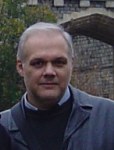 Panagiotis Kambanis graduated in archaeology at the Philosophy Faculty of Belgrade University. He has been working as an archaeologist at the Museum of Byzantine Culture in Thessaloniki for twenty-five years. He has defended a thesis on "The amulets in late antiquity, their preservation and transformation by the Christian community" at the University of Thessaly in Volos. He speaks Serbian, Croatian, English, and has good command of Russian and Bulgarian.
Panagiotis Kambanis graduated in archaeology at the Philosophy Faculty of Belgrade University. He has been working as an archaeologist at the Museum of Byzantine Culture in Thessaloniki for twenty-five years. He has defended a thesis on "The amulets in late antiquity, their preservation and transformation by the Christian community" at the University of Thessaly in Volos. He speaks Serbian, Croatian, English, and has good command of Russian and Bulgarian.
In early 2014, within the context of the celebrations to mark twenty years since the Byzantine Museum first opened its doors to the audience of Thessaloniki with the exhibition "Light comes from Thessaloniki" the city was honoured as the birthplace of Cyril and Methodius. The presentation of the catalogue that accompanied the exhibition and that was published under your scientific editing took place on 30 March this year. What are the main highlights in the exhibition reflected in it?
The exhibition, which was primarily photographic, presented the events in the Middle Byzantine Period (8th-12th century), the contribution of Thessaloniki - the birthplace of Cyril and Methodius where they spent their formative years as individuals, the spiritual and cultural foundation of Constantinople - the "navel of the world" at the time, the diplomatic, missionary and civilizing activity of the two Apostles among the Slavs in today's Central Europe as well as their contribution to the creation of the Glagolitic alphabet with the help of which they managed to convey to the Slavs the whole poetic universe of the Byzantine liturgical texts, the excerpts from the Gospels and the Acts of the Apostles, the canonical and legal texts, and of the discourses of the great Fathers of the Church. The creation of the Cyrillic alphabet by their disciples and the subsequent gradual "Byzantization" and "Christianization" of the Slavs had a special place, as might be expected.
Carefully selected archaeological material enriched the exhibition. The remnants of antiquity took us on 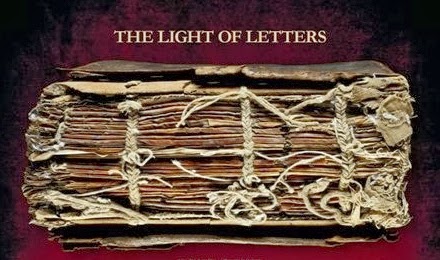 a journey in a multidimensional space, presenting us with the opportunity to have the vision and experience of a bit of the daily life of the people of the past. The archaeological finds that were an impressive and diverse collection of exhibits from Thessaloniki and its wider region in the Middle Byzantine Period aimed to highlight, as far as possible, the atmosphere of the era through the impressiveness they express and to turn reflection on Time into an act unlocking reconsideration of human values.
a journey in a multidimensional space, presenting us with the opportunity to have the vision and experience of a bit of the daily life of the people of the past. The archaeological finds that were an impressive and diverse collection of exhibits from Thessaloniki and its wider region in the Middle Byzantine Period aimed to highlight, as far as possible, the atmosphere of the era through the impressiveness they express and to turn reflection on Time into an act unlocking reconsideration of human values.
Nowadays, when almost all of us live in a labyrinthine reality, the need to connect the culture that we have inherited with our own lives, to transfer bridges between "...past, present and posterity..." as English poet and Nobel Prize winner William Butler Yeats wrote in 1927 in his work "Sailing to Byzantium" is becoming more pressing.
The ninth century when Cyril and Methodius lived and carried out their activities is a divide for both the East and the West.
The trouble in terms of history is that while the past really happened, what has been preserved is nothing more than notes that people were taking. Usually these are the winners because wars play a crucial role throughout history and those who have not died in them write memoirs and chronicles.
Four major events should concern us at the exhibition and the congress, and in the catalogue. The first is the crisis of the Iconoclast period that altered the relationship between the church and the state.
The other three events are the three schisms between the West and the East, namely the religious schism that is the most famous, the geographic schism when the Slavs conquered Central European territories and in fact divided the empire into two, and, especially, the politica schism, when Charlemagne was crowned Emperor of the Western Roman Empire. The former single head eagle, the symbol of the Roman Empire, became two-headed, thus representing the eastern part of the Empire, which gradually began to form as Byzantium.
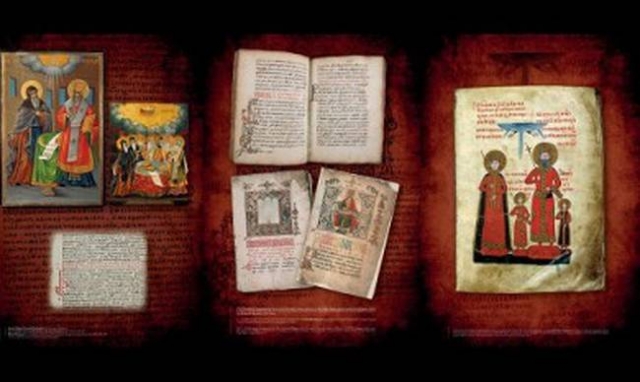
Every time the lights of an exhibition turn off, the only thing left is the catalogue. It will preserve its message after its end. Like any other exhibition, "Ex Thessalonika Lux" had a four-dimensional goal. The "product" that an institution like the Museum of Byzantine Culture produces should be primarily cultural but also with an educational and touristic value, and have "diplomatic" dimensions too in some way. All those who contributed to its occurrence, we believe that together with the parallel events the exhibition achieved its goals.
The work of Cyril and Methodius, the creation of the alphabet, has not only religious, political and diplomatic significance but above all spiritual and civilizational dimensions because it lays the foundations for the development of all Slavic nations that, thanks to the power of the written word, worthily ranks them among the oldest nations in Europe. Did the scientific congress on 1150 years since the Moravian mission of Cyril and Methodius discuss these aspects? How would you summarize the conclusions drawn from it?
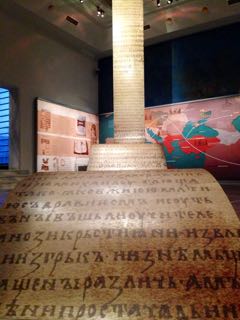 Everything new that happens, including an exhibition, catalogue, monograph, congress should always be welcome as long as it provides answers to questions from the past as far as possible and raises new questions for the next generations of researchers. By confirming things that are already known one does not reveal anything except his own vanity. People constantly hide behind bombastic words or cowardly silence. Sincerity is a difficult thing! All are pushy and aggressively ambitious but few are daring. These are the disadvantages not advantages for a scientist who tries to peek through the gaps left by the all-conquering time having first found and then transferred a reality that is difficult to interpret in most cases. All sciences that deal with the past must forget full stops and use all other punctuation marks, such as question marks, exclamation marks, commas. No intellectual arrogance is more dangerous than putting a full stop on a chapter of history. I mean to accept that "it is so since you have written it. Full stop. It does not require any doubt and further study."
Everything new that happens, including an exhibition, catalogue, monograph, congress should always be welcome as long as it provides answers to questions from the past as far as possible and raises new questions for the next generations of researchers. By confirming things that are already known one does not reveal anything except his own vanity. People constantly hide behind bombastic words or cowardly silence. Sincerity is a difficult thing! All are pushy and aggressively ambitious but few are daring. These are the disadvantages not advantages for a scientist who tries to peek through the gaps left by the all-conquering time having first found and then transferred a reality that is difficult to interpret in most cases. All sciences that deal with the past must forget full stops and use all other punctuation marks, such as question marks, exclamation marks, commas. No intellectual arrogance is more dangerous than putting a full stop on a chapter of history. I mean to accept that "it is so since you have written it. Full stop. It does not require any doubt and further study."
Fortunately, however, all may live under the same sky, but not all have the same horizon. I would like to mention your presence too, dear friend Zdravka Mihaylova. Through your lecture "The Cyrillic alphabet as a way of spiritual communication: translations of Greek literature in the Bulgarian language" you offered us a look at the past, throwing us into the secrets of translations from Greek with Cyrillic letters, from the 9th century (when the students of Cyril and Methodius continued the work of their first teachers) until today, when modern Greek authors enjoy preference and respect on the part of the Bulgarian readership.
In my opinion, the congress had no contribution. At some point, someone has to pull out the indigo sheet. Dozens of books and scientific articles on Cyril and Methodius have been written that essentially reproduce the same information in different words with publishing purposes. Even the images that we have and use are always the same.
The major figure in that era was undoubtedly Patriarch Photius, one of the greatest personalities in European civilization. Photius is considered the inspirer of the project of Byzantization and Christianization of the Slavic people and the mentor of Cyril and Methodius. The contradiction lies in the fact that we do not have any references in so many of his writings that constitute his famous encyclopaedic essay "Library" (Μυριόβιβλος). There are no references in the two most important illustrated manuscripts of the time, namely the Chronicle of John Skylitzes and Manasses’ Chronicle.
What we know comes only from two biographies that have been preserved and that are written in Old 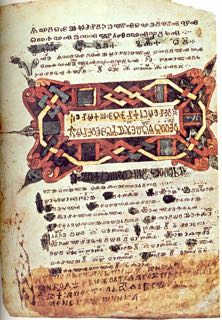 Slavonic. Let us think how many works of art were destroyed by the large number of wars and how many others are found every day to this day. Written and visual references exist only in the Slavic world but they date back to the time when the brothers were already canonized (see. the Radziwiłł Chronicle (or Königsberg Chronicle), 15th century).
Slavonic. Let us think how many works of art were destroyed by the large number of wars and how many others are found every day to this day. Written and visual references exist only in the Slavic world but they date back to the time when the brothers were already canonized (see. the Radziwiłł Chronicle (or Königsberg Chronicle), 15th century).
Since the ideas of the past, though faded, are still too strong, and because those that should replace them are still at the stage of formation, they could be compared with the water mass of a river that runs slowly in its bed; temporary ideas with the small waves that always change, rippling the river surface, and though they are not actually significant they are more visible than the river stream itself. And let us not forget that yesterday’s peculiarity is a logical explanation of tomorrow.
The Cyrillic script undoubtedly is a way of spiritual communication with a multidimensional significance. The alphabet created by the Thessaloniki brothers, two visionaries, par excellence carriers of the spirit of the expansion of spiritual horizons, ranks among the most valuable cultural contributions of Bulgaria to the European heritage that has endured over time and a number of masterpieces of European literature are written in the Cyrillic alphabet. What is the most significant contribution of Cyril and Methodius according to you?
In one of his many writings, Emperor Leo the Mathematician and the Philosopher, teacher of Constantine-Cyril at the Magnaur School and later archbishop of Thessaloniki, mentions that "the letters of the alphabet, which are considered sacred and absolute values, are nothing more than signs that can be used as symbols to understand the objective mathematical laws and the ratios of geometric harmony."
Having this knowledge Constantine-Cyril outlined the spoken language of the groups of Slavic population in a written language by a specific graphic code.
The first alphabet, the Glagolitic, was appropriate to express all the sounds of the Slavic language and it corresponded to the phonetic features of different dialects. Constantine-Cyril the Philosopher created an alphabet with 38 letters, i.e. one letter for every sound of the Slavic speech. The Glagolitic alphabet does not resemble any other known alphabet. Research today accepts that this is an original invention. The apparent similarity of the letter-like symbols of the Glagolitic alphabet with the symbols used by the alchemists of that time as well as by other "mystical" and "apocryphal" letters is a source of major controversy.
The Cyrillic alphabet, which is based on the major letters of the Greek alphabet, and does not have even a visual connection with the Glagolitic alphabet, was probably created in the Preslav Literary School in North East Bulgaria. This theory is supported by the fact that the Cyrillic alphabet almost entirely replaced the Glagolitic in this area in the late tenth century, whereas the Ohrid Literary School continued to use the Glagolitic alphabet until the twelfth century. Assuming, as many believe, that the creation of the alphabet represented the greatest achievement of Constantine-Cyril the Philosopher, how should we explain its rapid rejection and replacement?
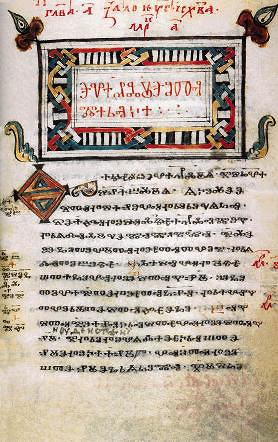 One of the reasons for the replacement of the alphabet, which today represents the graphics system used by part of the Slavic world and a lot of Asian nations, is considered its simplification and greater ease of use. I regret, however, when I find that some Slavic peoples, primarily in Central Europe, have sacrificed a rich and well-structured alphabet on the altar of their Latinisation. From glagolica we pass to cirilica and then to latinica. What follows, by the way?
One of the reasons for the replacement of the alphabet, which today represents the graphics system used by part of the Slavic world and a lot of Asian nations, is considered its simplification and greater ease of use. I regret, however, when I find that some Slavic peoples, primarily in Central Europe, have sacrificed a rich and well-structured alphabet on the altar of their Latinisation. From glagolica we pass to cirilica and then to latinica. What follows, by the way?
You have occupied yourself professionally with the talismans and amulets of late antiquity, and especially with the way in which these were preserved and transformed by the first Christian communities. For the year 2016–17, in cooperation with Professor Chirstopher Faraone of the University of Chicago, you are laying the foundations for an international conference on the topic of "Magic Inscribed Stones of Late Antiquity and of the Byzantine Period". Is it your desire to have this conference realized in Thessaloniki, and in particular at the Museum of Byzantine Civilization?
My involvement with the "magical" world of talismans began about 15 years ago and it will continue to command my attention for some time to come. My doctoral thesis, as well as many of my articles and activities, have had as a topic the study and research of amulets, and especially the enduring weakness of mankind in confronting “the two ruling forces of life, Fear and Hope”, as Loukianos aptly formulated it during the second century CE.
This particular conference constitutes an institution, which is realized at regular intervals in different cities of the world. At the London conference of 2006, in which I participated, I had the pleasure to get closely acquainted with all the big names in the scientific field and most importantly to be accepted as one of them. In their singular way, they made me feel "important". I was (and continue to be) the only Greek scholar engaged in studying this specific topic, and moreover with the eyes of a Byzantinologist. Also, I was the youngest of the gathering, something which impelled them to embrace and "adopt" me.
Seven of those leading researchers/scholars/professors also did me the honour of contributing squibs for my currently in-press book ''Phylax (Guard): Amulets in Late Antiquity''. Any time that I want to feel better, I read the prefaces which they have dedicated to me, and I confess that many times I cannot hold back my tears, when I ascertain with how much immediacy, directness and altruism they place me on a level equal to themselves, as when Professor Peter Brown writes "that it concerns a study which we will be having with us for many years!".
As you can understand, we are talking about surrealistic situations for a Greek scholar who has learned that in order to attain the least little thing one first has to give one's all.
Naturally, to attain my wish for the conference as well as for a certain accompanying exhibition, to be realized in Thessaloniki and particularly at the Museum of Byzantine Civilization. Unfortunately, that does not depend on me. Museums in Greece operate as mere public services and the final decisions in each case are strictly the concern of the administrators. The difficulties are not limited to them and their realization, but mainly to the manner in which they will become acceptable to the particular management, which usually is not represented by the most dynamic intellects but by the most trustworthy party-loyal human reserves. Of course, this view of mine is not the whole story. There will always be a chink in all this through which light can enter. There exist and always will exist certain individuals who will choose to take, from the altars of the past, the flame and not the ashes. I rely on them.
In 2005, the Museum of Byzantine Civilization was given the award for best museum in Europe, a distinction which until then no other Greek museum had managed to gain. This success was not owed just to one individual but was collective, belonging to all those working in all of the specialist fields. I too took part in this team, something which made me feel proud and which I have included in my CV in standout type. For many years we made up a close-knit team which worked together with a common purpose and fraternal feeling, as we were instructed to do by the first and fondly remembered director of the museum, Ms. Eftichia Kourkoutidou-Nikolaïdou, in effect a second mother for many of us.
The load which all the employees and specialists bear is terrific and must be faced every day with devotion and respect. As almost always is the case, some contribute and others take and continue to be slackers. However, that must not become a limiting factor for the required developments in research, study and promotion. As ever, the maestro will turn his back on the public during the entire duration of a concert, strongly emphasizing that he is leading the orchestra, and only after the conclusion will he turn to face the audience and receive its applause.
Going back to the subject of the conference you asked about, Thessaloniki fortunately has at its disposal a number of varying cultural venues, where different cultural activities can be staged.
What other activities and investigations figure in your future plans?
"If you don't find spring, you make it," wrote [the poet] Odysseas Elytis. The best way for someone to forecast their future is to create it. I do not worry that the end of the world might happen today, because already tomorrow has dawned on the other side of the planet.
For the present, I am engaged systematically in the completion of my postgraduate thesis at the Aristotle University of Thessaloniki. I would not yet like to give more details, since it concerns the study of a unique early-Christian culture, which I study by means of a private collection, perhaps the largest of its kind.
In 2006, following an invitation from Professor Angelos Chaniotis, I was hosted at All Souls College in Oxford. There I was initiated into a major programme which he had prepared about emotions in the ancient world. The programme received a generous financial sponsorship from the European Union and proceeded at a rapid pace. I confess that I was jealous. He had not told me, and neither did I understand by myself, that he had already chosen me as a member of the team and moreover in one of the best sections. The overall purpose is that, upon completion of the research, an exhibit be mounted in New York, specifically at the Onassis Foundation, accompanied of course by an international conference. I will not disclose anything further, since this entire project is the exclusive creation of Professor Chaniotis and I believe that I do not have the right to say anything more.
In terms of the future of the museum, perhaps for the first time after 25 years of working there, I do not know. Everything will depend on the present, which is taking shape on a daily basis. That which I am in a position to be aware of is an exhibit which the conservators of antiquities and artworks in the museum have readied for autumn 2015, to make evident the difficult path followed by an ancient artefact from its excavation to the exhibiting spaces of every museum.
For some, culture is quantitative, but for others, among whom I consider myself, qualitative. The number of exhibits, activities and events has no significance without substance and content, as what is important is the validity and prestige which these have and above all that which is documented as the heritage of the wider culture. Neither opening ceremonies, salutations nor fine words create culture. Development for the sake of development is the philosophy of the cancerous cell.
Quality does not derive from the money you have at your disposal as a foundation, but primarily from knowledge, diligence and an open mind. I reckon that the era of the one-man show has long since passed, and those who continue to believe that they can do everything and indeed successfully, overestimate themselves.